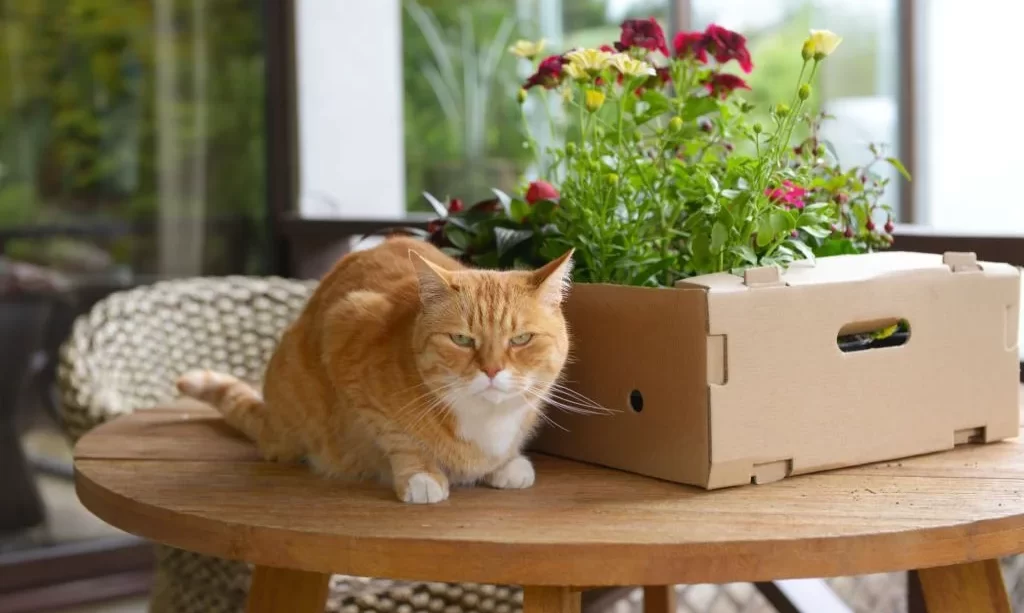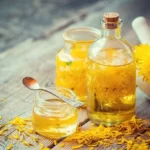As caring and responsible pet owners, it’s crucial to be mindful of the plants and flowers we keep in and around our homes, especially if we share our lives with feline companions. Cats are known for their curiosity, and they may occasionally nibble on plants. In this article, we’ll explore the safety of Dianthus plants in the context of our beloved cats. Dianthus, with its strikingly beautiful blooms and enticing fragrance, is a common addition to gardens and indoor plant collections. However, before we delve into whether Dianthus is safe for cats, let’s first understand what Dianthus plants are and their various species and characteristics.
What Are Dianthus Plants?
Dianthus, commonly known as “pinks” or “carnations,” is a diverse genus of flowering plants. These plants are celebrated for their stunning, often fragrant blossoms and are favored by gardeners and florists alike. The name “Dianthus” is derived from Greek words meaning “divine flower,” a testament to their aesthetic appeal.
Dianthus plants encompass a wide range of species and varieties, each with its unique characteristics. Some common species include Dianthus caryophyllus (carnation), Dianthus barbatus (sweet William), and Dianthus deltoides (maiden pink). These plants vary in size, flower color, and growth habits, making them versatile choices for both garden beds and floral arrangements.
While Dianthus is admired for its ornamental value, it’s essential to explore whether the various species within this genus pose any potential dangers to our feline friends. Let’s delve deeper into this to ensure the safety and well-being of our cats.
Potential Dangers of Dianthus to Cats
Despite their enchanting appearance, Dianthus plants can potentially pose risks to our feline companions. The primary concern lies in the substances contained within these plants. Dianthus plants may contain alkaloids and glycosides, which, when ingested by cats, can lead to various health issues. These compounds can be toxic to cats and may result in symptoms of poisoning. It’s worth noting that the toxicity levels can vary among different species and varieties of Dianthus.
Common Symptoms of Dianthus Poisoning in Cats
Recognizing the signs of Dianthus poisoning in cats is essential for timely intervention and treatment. The symptoms can vary in severity but often include:
- Gastrointestinal Distress: Cats may exhibit vomiting and diarrhea shortly after ingesting Dianthus plants.
- Drooling: Excessive salivation or drooling is a common sign of plant toxicity.
- Lethargy: Affected cats may appear unusually tired and listless.
- Loss of Appetite: A sudden loss of interest in food can be an indication of poisoning.
- Oral Irritation: Cats may paw at their mouths or show signs of discomfort in the oral cavity.
In severe cases, if left untreated, Dianthus poisoning can lead to more serious health complications. Therefore, if you suspect that your cat has ingested any part of a Dianthus plant and exhibits these symptoms, it’s crucial to seek immediate veterinary care.
Preventing Dianthus Poisoning
Prevention is the best approach to keep your feline friend safe from Dianthus poisoning. Here are some practical steps to safeguard your cat:
- Plant Selection: If you have cats, consider choosing non-toxic plants for your garden or indoor spaces.
- Plant Placement: Keep Dianthus plants out of reach by placing them in areas inaccessible to your cat.
- Supervision: If your cat spends time outdoors, supervise their activities to prevent them from nibbling on plants.
- Deterrents: Use cat-friendly deterrents like bitter sprays on plants to discourage chewing.
- Indoor Plants: If you have Dianthus indoors, ensure they are placed in areas your cat cannot access, like high shelves or rooms with closed doors.
By taking these precautions, you can create a safe environment for your cat and enjoy the beauty of Dianthus plants without worrying about potential poisoning risks.
What to Do If Your Cat Is Exposed
If you suspect that your cat has been exposed to Dianthus plants and is displaying symptoms of poisoning, it’s crucial to take immediate action:
- Remove the Plant: Safely remove any remaining Dianthus plant from your cat’s vicinity to prevent further ingestion.
- Contact a Veterinarian: Call your veterinarian or an emergency pet clinic immediately. Describe the symptoms and follow their guidance.
- Monitor Your Cat: While waiting for professional assistance, keep a close eye on your cat and provide comfort and reassurance.
Remember that early intervention is vital in cases of plant poisoning, so do not delay seeking veterinary care.
Safe Alternatives for Cat-Friendly Gardens
Creating a cat-friendly garden is an excellent way to enjoy greenery while ensuring your cat’s safety. Consider these alternatives to Dianthus:
- Cat Grass: Plant cat grass (such as wheatgrass or oat grass) that is safe for cats to nibble on.
- Catnip: Catnip plants are not only safe but also provide entertainment for cats.
- Herbs: Grow cat-safe herbs like mint, rosemary, or basil that can add fragrance to your garden and be used in your cooking.
- Non-Toxic Flowers: Choose flowers that are non-toxic to cats, such as marigolds or roses.
These options allow you to maintain a beautiful garden while ensuring your cat’s well-being.
- Your Cat Deserves the Best: Our cat grass blend adds important nutrients to your cat’s diet, including wheat grass, oat, barley, and rye. Organic and loaded with all the fiber your pet needs for healthy digestion, our cat grass kit provides hairball control for cats as well as a tasty treat.
- Cat Plant Magic: Add a soil disk, a splash of water, and a sprinkling of seeds, and watch your cat grass planter kit sprout like magic. Read our Cat Ladies insert for easy-to-follow instructions and growing tips, and watch your organic cat grass sprout up to 4” in just 4–7 days. No green thumb required.
- Good for Cats, Good for All: Not only are our grow kits organic and GMO-free, but our cat grass for indoor cats deters them from eating toxic household plants and digging up your favorite blooms, making our cat grass good for cats and their humans.
- Part Cat Grass, Part Decor: Our yellow wood-stained wood planter is a lovely addition to any home. The purrfect cat gift for cat moms everywhere, our simple and elegant cat grass growing kit keeps your house looking greener and cleaner.
- What’s Inside: Our Cat Grass Growing Kit includes a yellow wood-stained wood planter (10” x 5” x 4”), 3 soil disks (number may vary), seeds for planting edible grass, and simple instructions.
Conclusion
In the pursuit of a harmonious living environment for our feline friends, understanding the potential dangers of plants like Dianthus is crucial. While Dianthus plants are beloved for their beauty and fragrance, they can contain substances that are harmful to cats when ingested. Recognizing the signs of Dianthus poisoning and taking swift action is vital for your cat’s health.
To prevent Dianthus poisoning, opt for cat-friendly alternatives in your garden or indoor spaces, ensuring that your cat can explore without encountering toxic plants. By following these precautions and being aware of potential risks, you can provide a safe and enjoyable environment for your cat, allowing both you and your furry companion to enjoy the wonders of nature without worry.






